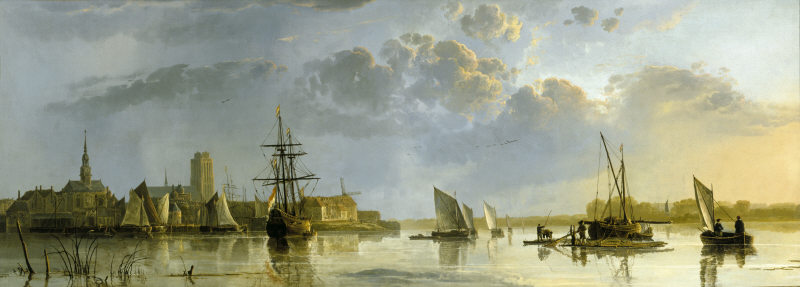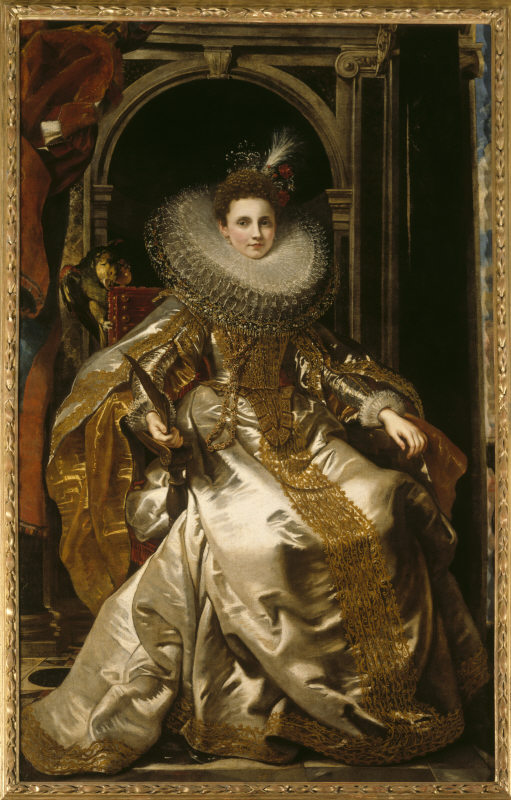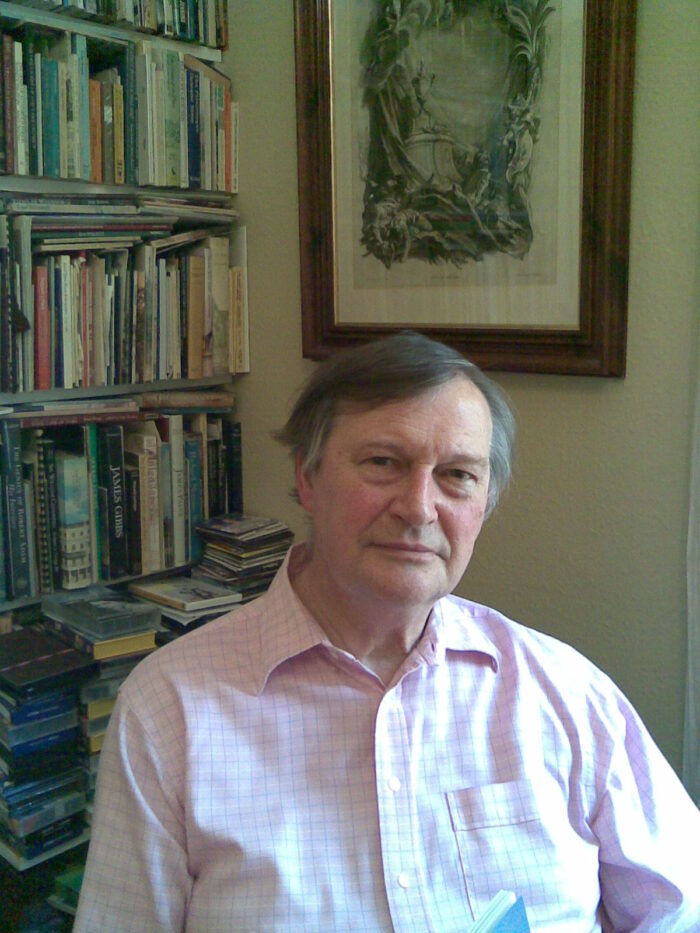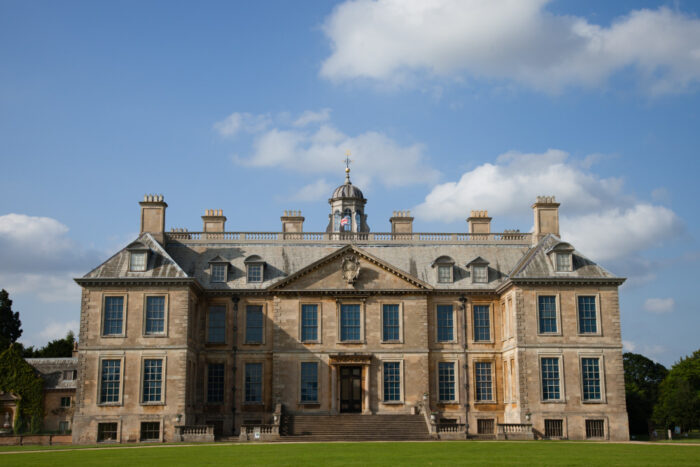This article was originally published in the CODART eZine, no. 2 Spring 2013.
Alastair Laing (1944) recently retired as Curator of Pictures and Sculpture at the National Trust after a career of almost twenty-seven years devoted to the art preserved in historic houses. Laing personifies the title of his much-admired exhibition In Trust for the Nation, held at the National Gallery, London in 1995-96.
As a curator at the National Trust, he looked after the marvelous collections of paintings in around 120 historic houses with great knowledge and care. It has only been since the mid-twentieth century that the National Trust (founded in 1895) and others have gradually come to acknowledge its growing responsibilities for the art collections of country houses, which makes it clear how important the work of Laing – and that of his predecessor St John Gore (curator from 1956 to 1986) and his successor David Taylor – has been and continues to be. The National Trust’s collection of paintings is second only to the Royal Collection in number and quality.
We all know you as Curator of Pictures and Sculpture at the National Trust. Would you please tell us what you did before joining that organization?
I studied history at Oxford (in those days art history was not yet a degree subject) and afterwards did a one-year diploma in art history. After a year in the civil service, I applied to the Courtauld Institute of Art in London, and began to work on a never-finished thesis on the origins of early South-German Rococo stucco under the supervision of Anthony Blunt (which did result, however, in my co-authorship with him of Baroque & Rococo: Architecture and Decoration [Paul Elek, 1978]). I really learnt my profession, however, while working at the Heim Gallery in London for seven years, cataloguing art, especially Mannerist and Baroque paintings and sculpture. That way you get to know works of art in all their different aspects. I was a co-curator and main author of the catalogue of the exhibition François Boucher, held in 1986-87 at the Metropolitan Museum of Art in New York, The Detroit Institute of Art and the Grand Palais in Paris. In April 1986 I entered the service of the National Trust.
You worked at the National Trust for almost twenty-seven years. What did your job entail? What changes took place in that organization in the course of your career?
I started as an Adviser on Pictures; the sculpture I myself added to my responsibilities. At that time there were some sixteen regional curators, called Historic Building Representatives, who were mainly architectural historians. The everyday responsibility for the art objects in the houses was not theirs, but part of the job of the property manager.
It was my duty to advise them on the hanging and rehanging of pictures, on acquisitions and lending, on conservation, cleaning and restoration. In my occasional talks to volunteers and room stewards I tried to improve their knowledge of their collections.
Most of my time, however, was devoted to the continuous process of cataloguing the pictures in the various historic houses and writing summaries for guidebooks. Over time the National Trust did experience some major organizational changes that affected my role as an adviser, inaptly renamed curator. The decentralization of responsibilities – “Going local” – resulted, in my opinion, in a deterioration of the curatorial responsibility for works of art. Being a curator is, after all, a profession requiring specialized knowledge and experience.

Aelbert Cuyp (1620-1691), View of Dordrecht, ca. 1655
Ascott, Buckinghamshire ©National Trust Images/John Hammond
About 120 historic houses that have pictures in their collections currently belong to the National Trust. How can those picture collections best be described?
It is important to make a distinction between houses with “real” collections of paintings (between twenty and twenty-five) and houses with a more or less random collection of pictures, accumulated by various owners in the course of time.
Examples of the first category are Petworth and Kingston Lacy, with collections formed over several centuries, and Ascott House and Upton House, both with collections of Old Master paintings that were acquired by their owners during the twentieth century: the 1st and 2nd Viscounts Bearsted and Anthony de Rothschild. The last two collections are more like present-day museum collections, and include artists as significant as Rogier van der Weyden, Aelbert Cuyp and Canaletto. In houses with a more “historic” accumulation of paintings, the genres of portraiture in particular – including portraits of animals – and landscapes dominate. The interest in portraiture corresponds, of course, to the owners’ interest in their ancestors and genealogy.
There is in fact a difference between pictures hanging in a museum and pictures hanging in a historic house. Would you care to elaborate on that?
Pictures in historic houses serve a dual role. They are both individual works of art and part of a historic interior. The interconnectedness in historic houses between paintings and the history of the house gives them something really special. It also explains the “family resemblance” between the paintings in our various houses. When trying to recreate historic hangs, one always has to strive for a balance between adjustments made for aesthetic reasons and those made for the sake of historical correctness.
The presentation of artworks to the public competes to some extent with the preservation of art. How did you deal with this conflict of interest?
The National Trust definitively developed a different line in this field in the course of time, with positive as well as negative consequences. Until about five years ago, there were a lot of ropes and so on to keep the public at a safe distance from vulnerable items. Since then barriers have increasingly been taken away. This enables the public to study works of art close up, but also increases the risk of damage to furniture and carpets. On the other hand, both barriers and the absence of small things can distort the feeling of authenticity when visiting a historic room. A problem that still has not been solved is the lighting of rooms.
Strong or too-evident artificial lighting is undesirable, but bad lighting affects our appreciation of individual works of art. I am very optimistic about the possibilities of fiber-optic lighting, using targeted light, but with the light source concealed. It would also enable us to illuminate pictures without damaging the more light-sensitive textiles, drawings and watercolors in the same room. The experiences with this kind of lighting at Waddesdon Manor are very promising. Unfortunately the method is expensive, and not always easy to install.
Do you have any favorites among the pictures in the National Trust’s care?

Francois Boucher (1703-1770), La vie champêtre
Belton House, Lincolnshire ©National Trust Images/John Hammond
I have many personal favorites. Among them is A View of Dordrecht by Aelbert Cuyp at Ascott House, a painting that was cut in two in the eighteenth century – into a morning view and an evening view! – but happily reunited in the nineteenth century. Among my favorites I also count a Self-Portrait of the Artist Engraving by the British artist Richard Morton Paye, shown at the exhibition In Trust for the Nation in 1995-96. At Petworth House I love the beautiful Adoration of the Magi by Hieronymus Bosch, a version of the one at the Prado, with a unique variation in the Christ Child. And, last but not least, François Boucher’s La Vie Champêtre at Belton House is one of my favorites, not only because of my professional interest in the work of this artist, but because, having persuaded its then owner to lend it to the Boucher exhibition in 1986-87, she angelically left it in her will to the house in which it had previously hung for two centuries.
Which two or three historic houses should CODART members visit at least once in their lives?
Well, let’s see. I’m very sure three houses stand out for their superb collections of paintings. Kingston Lacy, because of the wonderful Rubens portraits of the Marchesa Maria Grimaldi and Marchesa Maria Serra Pallavicino, and a set of fine mature portraits by Sir Peter Lely. Not to forget the Apollo Crowning a Poet by Tintoretto and the large Landscape with Herdsmen by Nicolaes Berchem. Second, of course, is Petworth House, with the previously mentioned Adoration of the Magi by Bosch, Van Dyck’s numerous portraits, including the early ones of Sir Robert and Lady Shirley in exotic costume, and Lely’s Three Young Children of Charles I. Ascott House is also very much recommended to CODART members, above all because of Cuyp’s View of Dordrecht, but also because of the masterpieces by other Dutch artists, such as Adriaen van Ostade and Ludolph de Jongh.

Peter Paul Rubens (1577-1640), Portrait of Marchesa Maria Serra Pallavicino, 1606
Kingston Lacey, Dorset ©National Trust Images/Derrick E. Witty
What were the most important events in your career at the National Trust?
The most interesting and professionally important event for me was the above-mentioned centenary exhibition In Trust for the Nation at the National Gallery, London in 1995-96. This exhibition showed an overview of paintings from National Trust houses. It was an illustration of how these paintings relate to the historic houses. The most terrible experience was the fire in 1989 at Uppark House, an intimate 1690s house with superb eighteenth-century interiors. The top floor, containing mainly family objects, was totally lost. The contents of the main lower area could be evacuated in time.
You are a member of CODART. What do you think about the exchange of knowledge and artistic experience between countries?
In my view there is much more exchange of knowledge and experience on the conservation level than on the curatorial level. In practice, curators seem to have too little time for the frequent exchange of knowledge. It is telling that we don’t even have much contact with our colleagues at the National Trust for Scotland. In the field of conservation, however, there is a lot of pioneering in conservation across borders.
The National Trust is a very dynamic organization. What are the major differences between the National Trust today and the way it was when you started working there?
There have indeed been many changes. The organization has doubled in size. Its headquarters were moved from London to Swindon in Wiltshire. Conservators were separated from curators. The curatorial function was delegated to property managers, to the detriment of the authority of the curatorial point of view in decision-making. One of the most important changes in the past ten years has been the emphasis on accessibility, something that has both positive and negative sides, as mentioned earlier. It is wonderful to have people enjoy historic houses and gardens, but it should happen in a way that highlights the qualities of the houses and the collections. The National Trust has also become a more campaigning organization, very much focused on fundraising.
What do you hope the National Trust will accomplish in the coming decades?
I hope that the National Trust will to some extent return to celebrating the historic houses and their collections for what they are. The present need always “to tell stories” somehow diminishes the emphasis on the houses, their inhabitants and the collections for their own sake. Our wonderful houses are exciting enough as they are, we don’t have to make them exciting artificially. I would like more money to be spent on the presentation of the houses and the collections. My concern applies to paintings in particular, which should have a surface clean and varnish every twenty-five years and a full clean every hundred years or so. We are very much behind schedule, partly because today the restoration of textiles, which are very fragile indeed, is understandably favored. But the sums of money involved are huge.
The National Trust, whose very name expresses its ambition to preserve the national heritage, whether natural or man-made, seems to be looking for new ways to interest the public in its cause, for example, by installing contemporary art in and around historic houses. What do you think of this development?
I admit I am not very happy about it. The emphasis on contemporary art has little to do with the purposes of the National Trust as expressed in its very name: The National Trust for the Preservation of Places of Historic Interest and Natural Beauty.
It distracts the organization from its goals, and leads to a diversion of funds to fashionable projects. We have some wonderful institutions, such as Tate Modern, that are fully devoted to the appreciation of contemporary art, so why should we try to duplicate that?
One of the wonderful things about being an art historian is the possibility to remain active after retirement. Do you have any plans for the future?
It will not surprise you that I will continue to work on François Boucher. I am planning a catalogue raisonné of his drawings. I have accumulated a lot of documentation in the past, but there is still a great deal of work to be done. I very much look forward to it, but I am extremely grateful for the quarter-century that I have had working for the National Trust.
Dr. Annette de Vries is director and curator of Duivenvoorde Castle near The Hague in the Netherlands. She has been a member of CODART since 2009.



